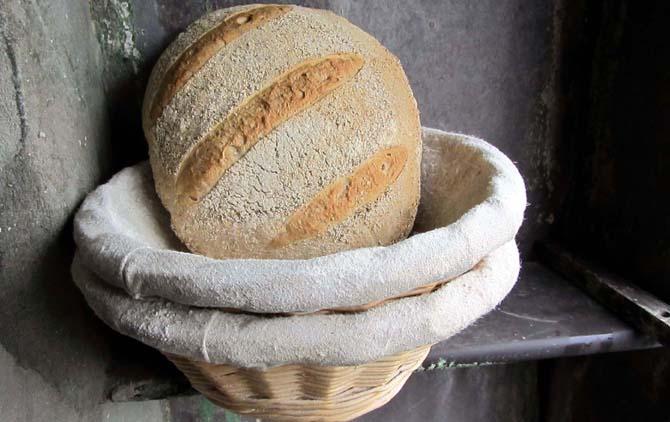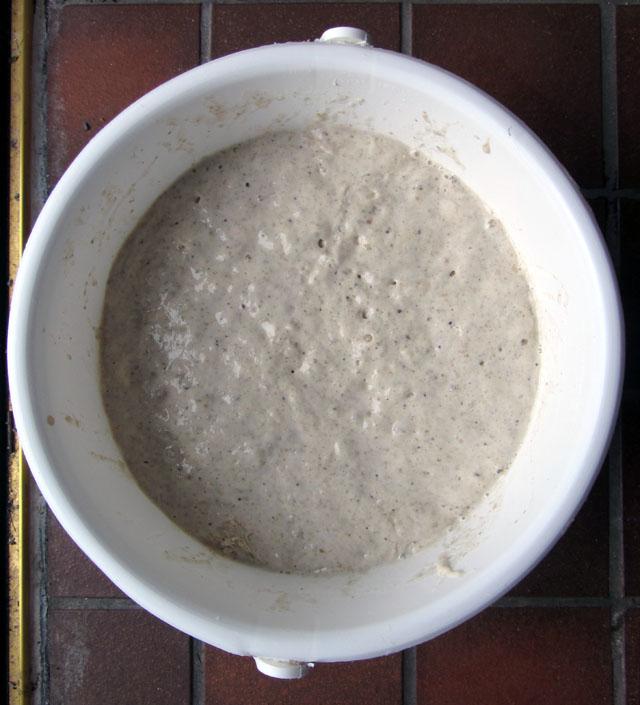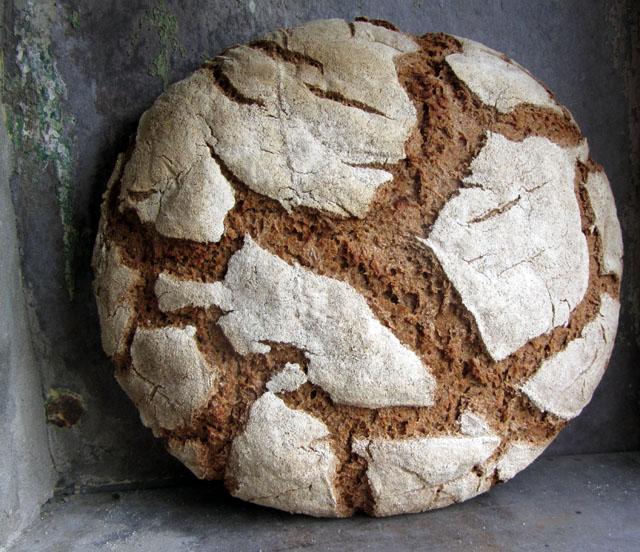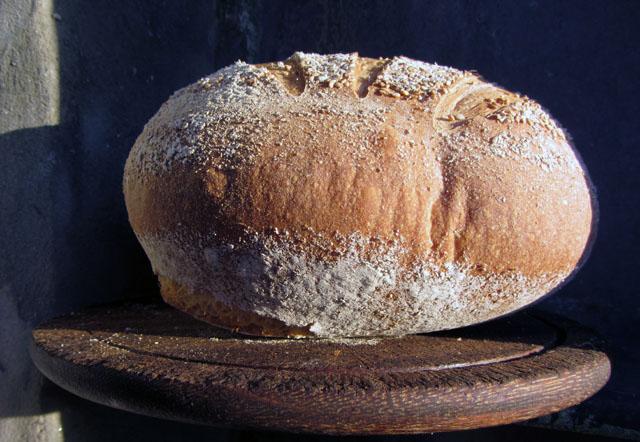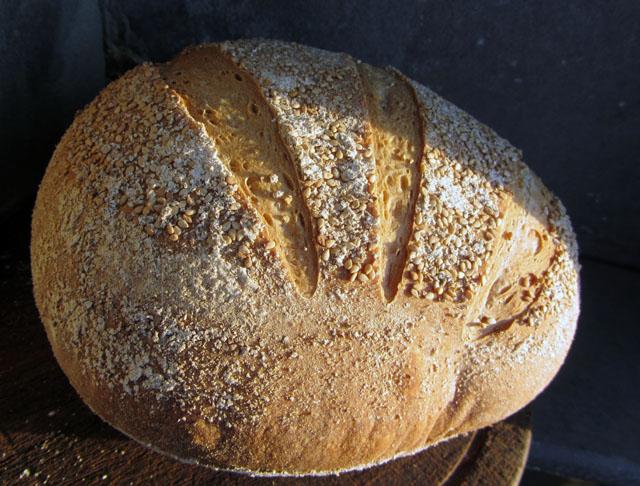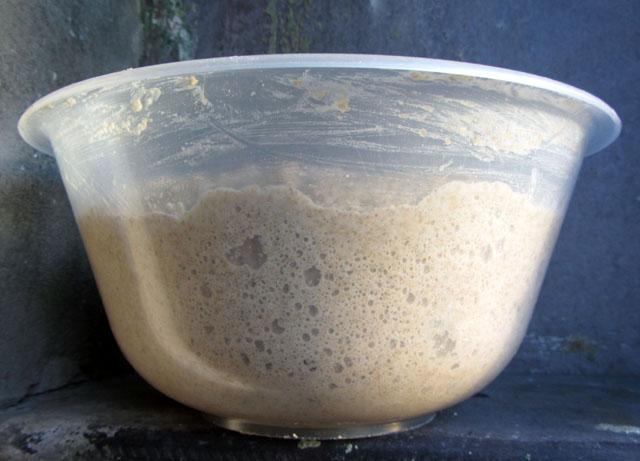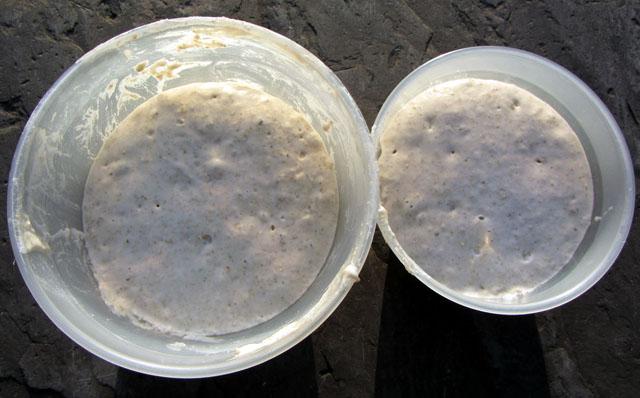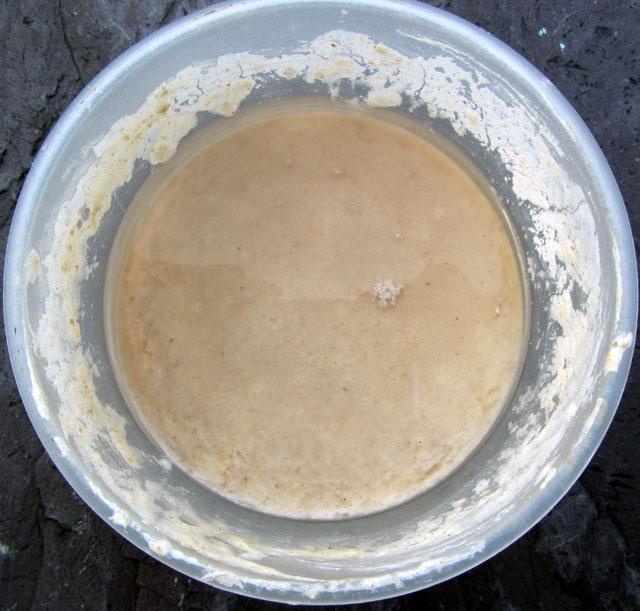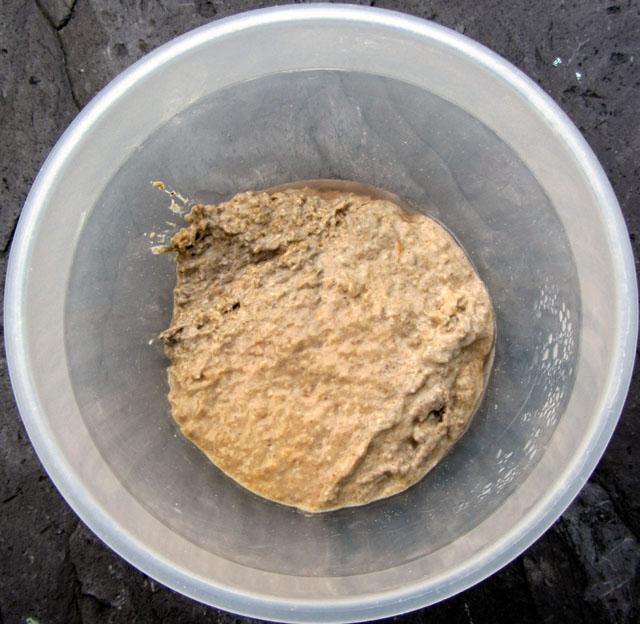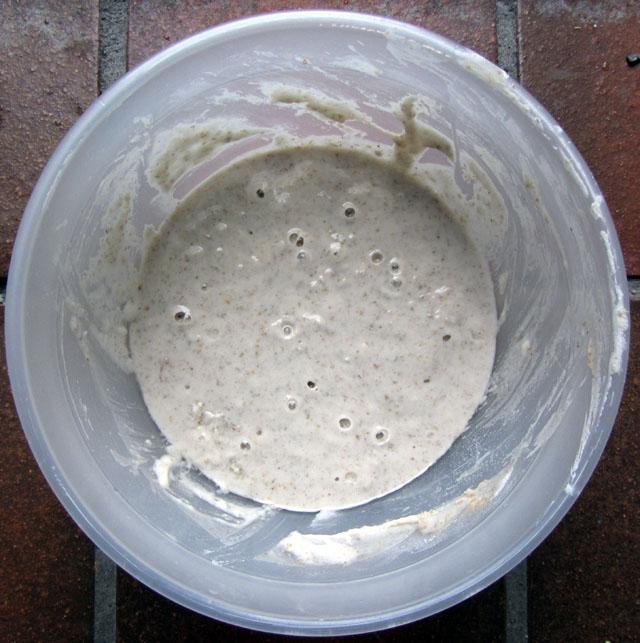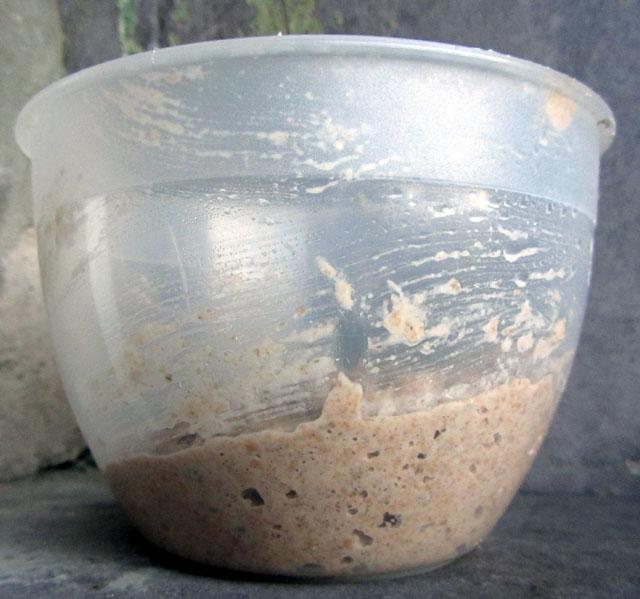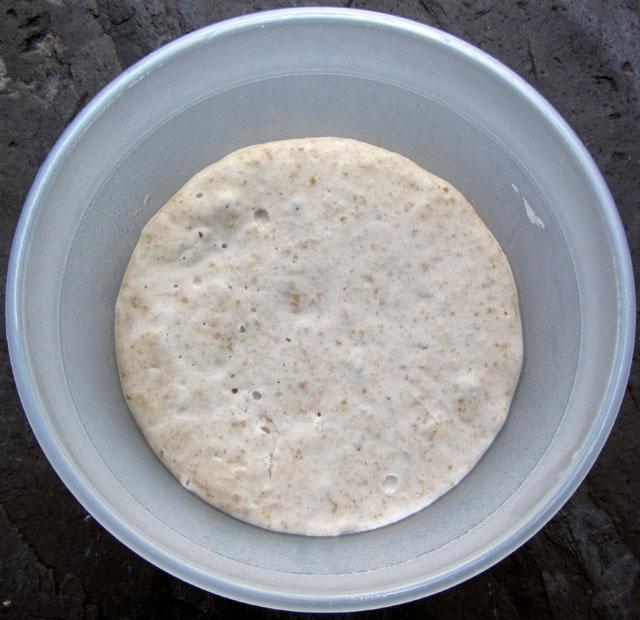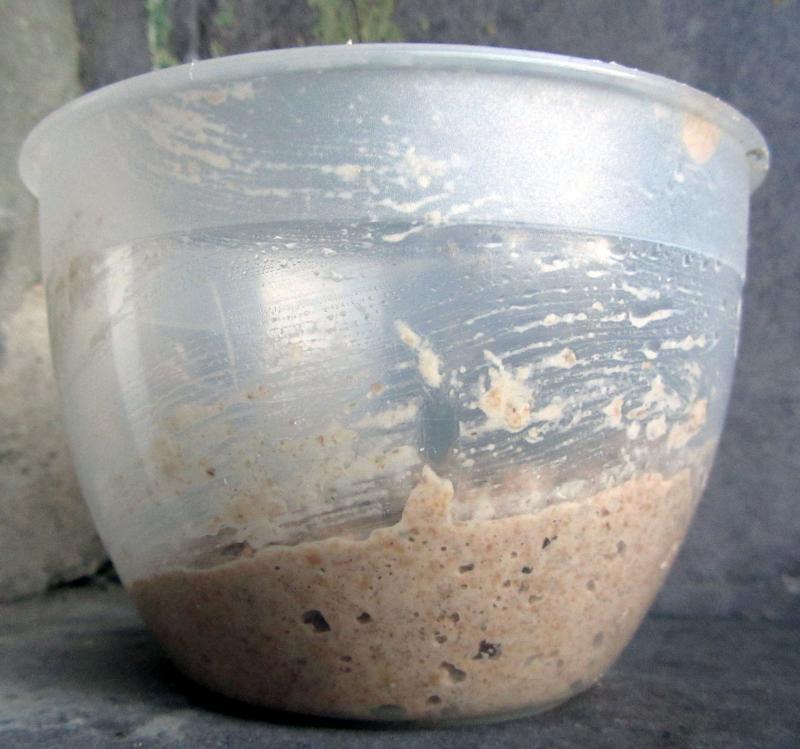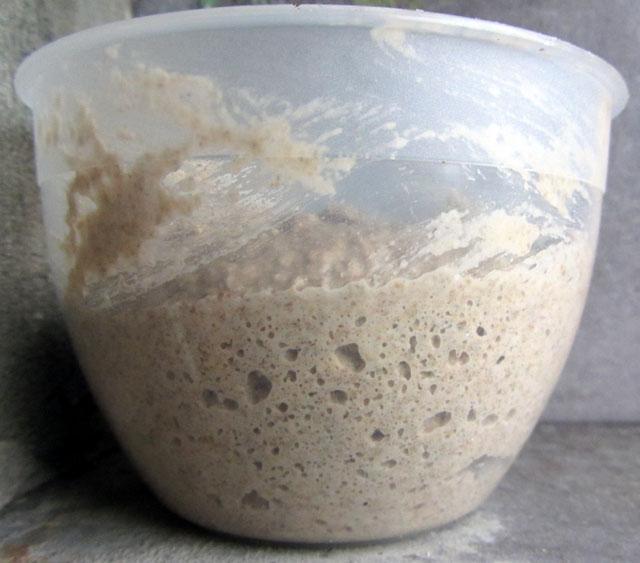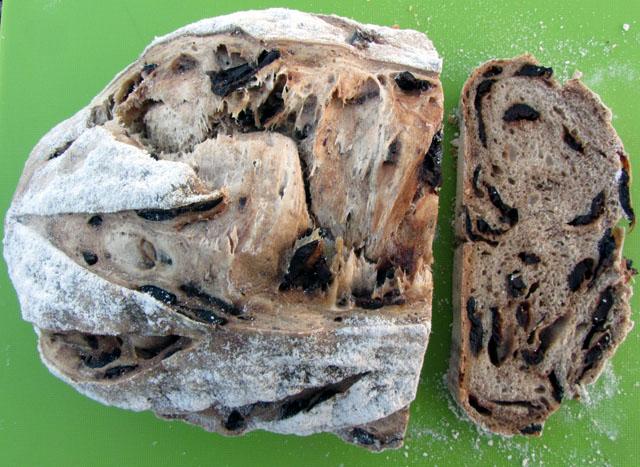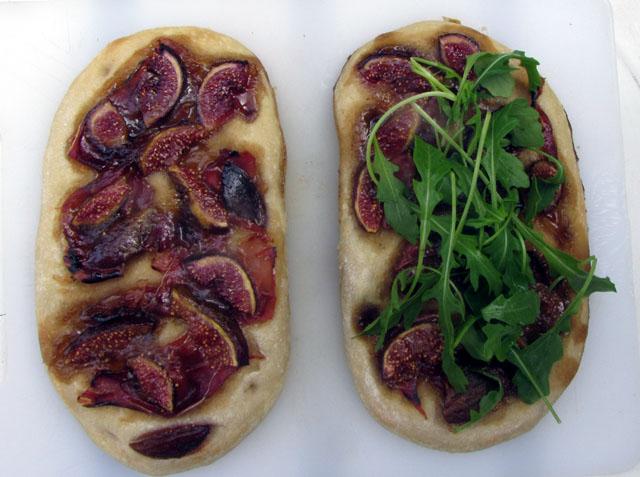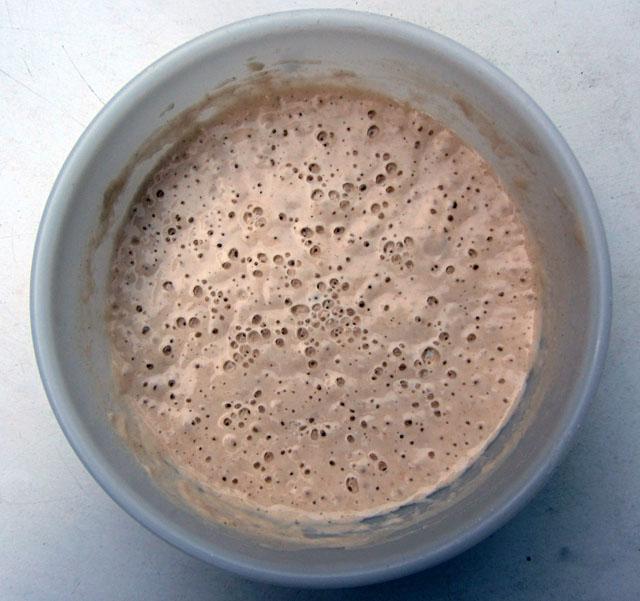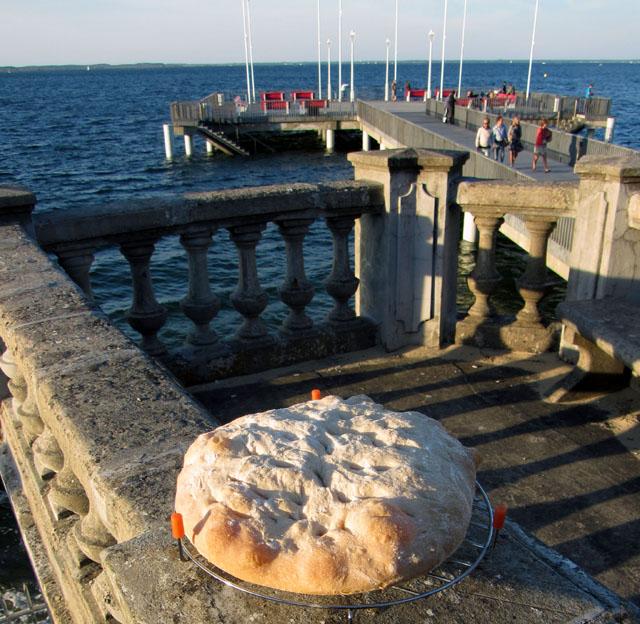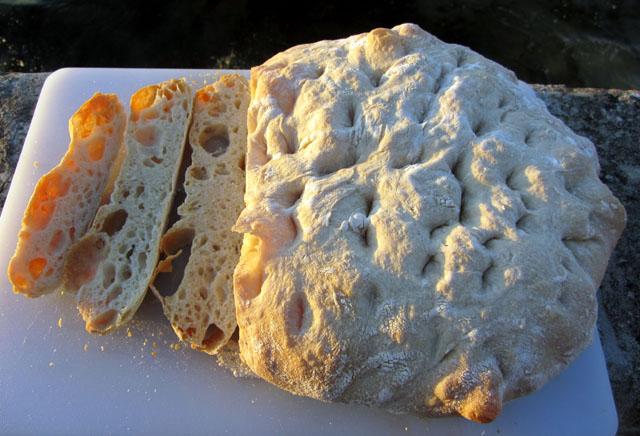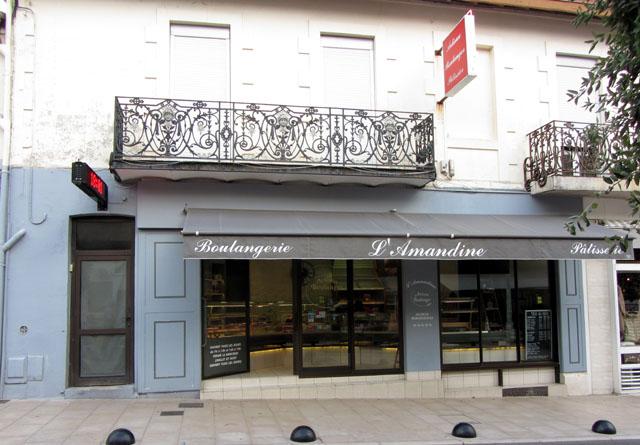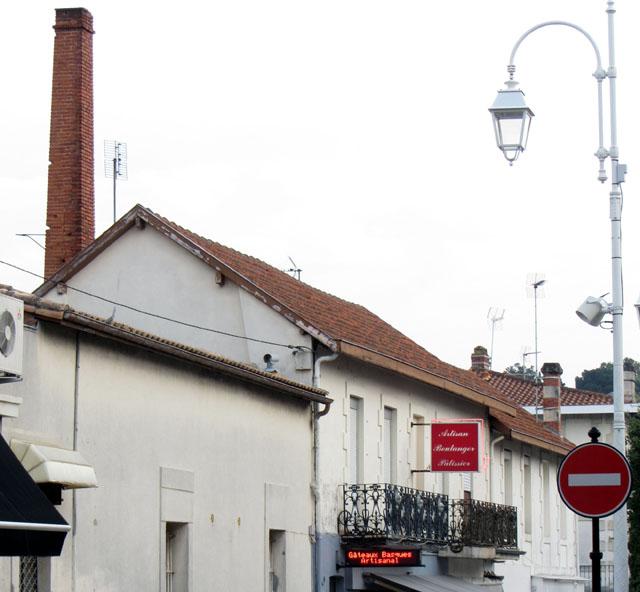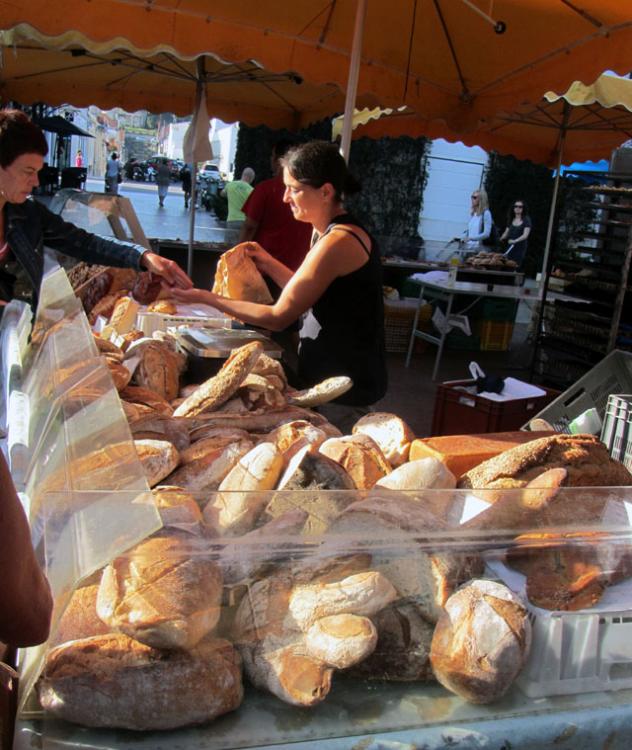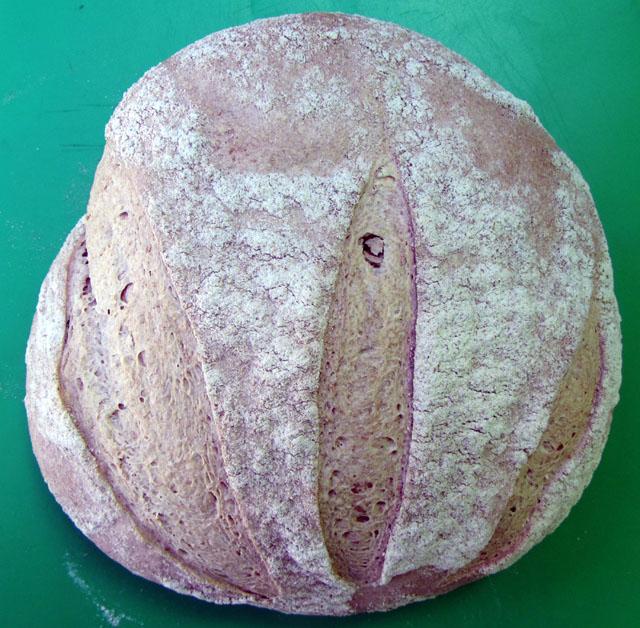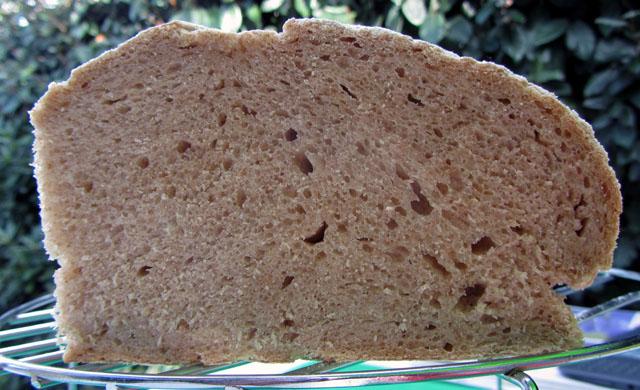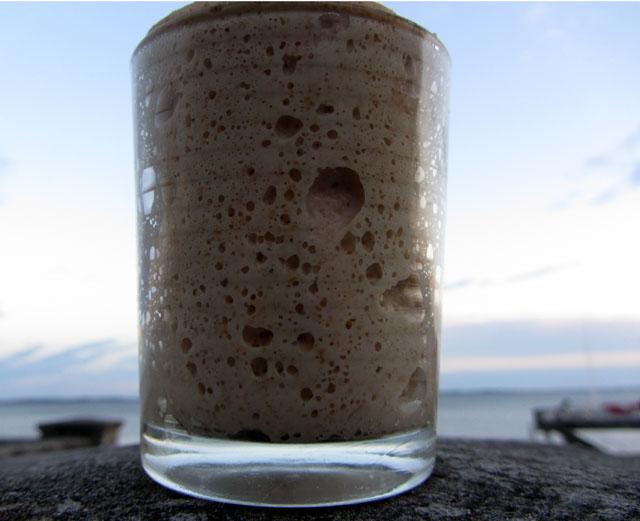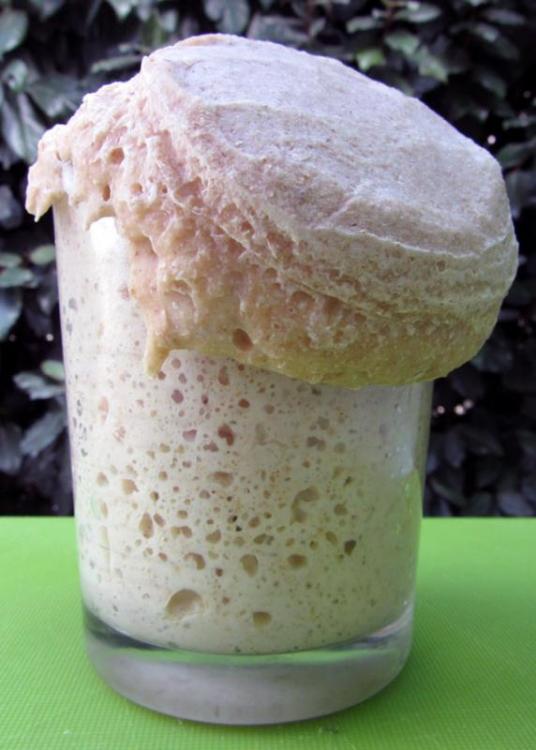
bethesdabakers
participating member-
Posts
239 -
Joined
-
Last visited
Content Type
Profiles
Forums
Store
Help Articles
Everything posted by bethesdabakers
-
Good seafood/lobster near Manchester
bethesdabakers replied to a topic in United Kingdom & Ireland: Dining
Hey MacD - Thanks for the info on Italian Club Fish. We had an excellent celebratory lunch there yesterday and it was just as you described. I make a point of saying thank you because this forum used to be a great source of information.But now - I'd still be sitting on Bangor station ten months on waiting for a tip for a birthday celebration in Cardiff - http://forums.egullet.org/topic/121351-pubs-the-topic/page-5#entry1949974 -
When I started this two months ago I deliberately opted for a New Topic because I have fundamental disagreements with the approach of some people posting on “The Bread Topic”. I don’t want to get into a fight with them so I have the good manners to start something separate. My aim has been to show that the basics of good bread making are simple and that much of what is now touted as being essential for success can be stripped out. Problem is, egullet is an open forum so, as long as a writer sticks to the topic, they can’t be stopped from ignoring the spirit of the thread and can muddy the waters with “pre-ferments”, not one but two periods of autolysis (can’t even follow the logic of that one) and dutch ovens. Plus I assume this is the start of another endless parade of impeccable photos of impeccable loaves. I’m not sure that that is in any way instructive. Good luck to everyone.
-
Well, there's a lesson in itself. Use what works best and not what you're supposed to use. And the crust in you photo looked beautifully thin.
-
Well, the theory is that creating steam in the oven slows down the formation of the crust when your dough goes into the oven allowing it to expand more and ensuring that you end up with a thin, crunchy crust. Professional bakers with deck ovens can do this with the push of a button. It has now become an article of faith that it is impossible for the home baker to make a good loaf without imitating this by using spray bottles, heating cast iron skillets in the bottom of the oven and lobbing in ice cubes, superheating lengths of chain and doing similar. All I can say is I can't see a difference if I try to create steam or if I don't - so I don't.
-
Mon Dieu!! Completely forgot to slash the bread! Yes, I do slash the tops immediately before they go in the oven using either a razor blade or a small serrated tomato knife. I don't, unlike a lot of people, use steam.
-
Some weeks back Rotuts asked: After mixing, the dough goes in a plastic box that has been rubbed with olive oil for about four hours or overnight in the fridge. If it’s the four hour job it might get an hourly stretch and fold (or it might not). It comes out of the box, gets divided by weight, has an air-fold (loosely shaped as a round by rotating in my hands whilst folding the edges underneath. The pieces get a short rest and then are shaped more tightly. I place them on the bench folds side up, press them gently into flat rounds, fold the edges into the centre and seal firmly with the heel of my hand, turn them over and shape them by rotating the dough, keeping the base on the bench, and pressing the edges underneath with the bottom edges of my hands. Easier to do than explain. Then I give the ball a good slap to flatten it slightly. This goes, seam side up, into a proving basket that has been sprinkled with wholemeal rye. The baskets are covered with tea towels and plastic sheet. The dough is proved for about three and a half hours. I bake in convection ovens on baking sheets – I don’t use stones. I flour the baking sheets with rye. Getting the dough onto the sheet is simply a question of picking your spot, holding the basket in your lead hand and confidently but gently tipping the dough out onto the spot. Your other hand is underneath, not to catch it, but just as a guide (and just in case!). If you need to reposition the dough a bit, just use both hands to give it a little twist. If you use a baking stone, then you need to turn the dough out onto a peel, professional or improvised, and slide it onto the stone. Semolina is usually used on the peel. Hope that’s useful – we get there in the end!
-
Well, there you go - I'll stick to what I know - bread making. But it can't be as bad as Cadbury and don't tell my Mom because she thinks they're great. As a matter of interest I've done bread courses for two chocolatiers in the past twelve months. They must be inquisitive people.
-
Asadus - a fellow Brummie! If I was in Brum with a £15 chocolate alocation I would avoid Bournville like the plague and head for Chouchoute in the Great Western Arcade, Snowhill. The man is a class chocolatier. Best wishes Mick
-
Well, that's it - full circle. Hope you've got something out of having five weeks of sourdough in action in your face. Happy to answer any questions but right now I've got customers to round up and then an aniversary weekend to sort out - a mere 38 years. Plus, say happy birthday to the starter - 15 years old this very day - well sometime about now in 1999, might as well call it today. If you want to learn more, a pdf copy of of my sourdough basics book could be with you within minutes. Details on the blog. Iechyd Da. Mick
-
Yesterday morning was looking back to normal: Built it from 1.5 kilos to 4.5. Late afternoon it looked like this: The two marks on the bucket show the rise - ever read that your starter should triple in volume? More missinformation ... Mixed three doughs totaling a little under 30K. These went in the fridge overnight. All night the lightning flashed and the thunder rumbled round the mountains (honest). The day of judgement is here. Started scaling and shaping at 6.00 a.m. All the dough is now in couches and baskets. First bake in 15 minutes! You remember I had a large amount of rye starter ready as a back-up.Yesterday morning I used it to run up a 2 kilo Simple Danish Rye: I usually bake them in tins but I thought I'd try it freeform. Absolutely delicious for breakfast this morning. Elsie, hang on in there. I wouldn't feed it until the are definite signs of activity.
-
B-limey Forgot to say that I divided the white starter into three this morning and used one part to make a test loaf. Don't think there's anything wrong with the starter. Of course I was only pretending to be nervous ... By this evening the rye was flying: so I've got rather a lot of un-needed rye starter on my hands. Have to do something with it in the morning. The two divided white starters are both doing well - I would almost say the smaller (1:2:2) is doing a bit better than the larger (1:1:1). I've amalgamated them and refreshed them up to about 1500g. Will build again in the morning. Yes, Smithy, it went down the sink. Starter at 100% hydration is easily diluted so it went down with plenty of other water.
-
Thank you for all your thank you's. There was a point when I thought I was talking to myself! I thought I'd round it off by showing you the aftermath - we got home Sunday morning about 1.00 a.m., my starters have been in the fridge for over four weeks and I need about 4.5 kilos of active starter to mix dough for around 30 large loaves on Wednesday evening to bake for customers the following day. Then I'll maybe give you the formulas for the Pan Pugliese and the Olive Bread and a feeding regime for your new starter. It's Tuesday morning and I'm getting a little nervous. Cats are supposed to be sulky after you've been away but Legs, our current furry, has been just so pleased to have us back. On the other hand I'm not so sure about the starters. I took them out of the fridge when we got home and did nothing till the morning. As you can see, a few millimeters of hooch on the top of the white starter. Poured it away and refreshed it at a ratio of 1:1:1 (equal weights of starter, water and flour). Rye - can't tell much from this. Refreshed as above. Not much action by Sunday evening so left them in peace until Monday morning when they looked like this: Not a lot of activity - refreshed same as previous. Rye not doing a lot either so left it alone as ryes can take longer to mature. Monday evening: Some activity in the white but not as much as I would have expected - refreshed again as above. The rye - which I hadn't refreshed - has moved on a little. Refreshed as before. This morning - with all the bread orders in - I start to get a little nervous: It IS active but it doesn't look the way I would expect. The rye is doing a little better. Time for drastic action - I must have a kilo of active starter tomorrow morning so I can build it to 4.5 for the evening's mix. Split the white starter and refresh one half at 1:1:1 and the other 1:2:2 (starter:water:flour) and do quite a large refreshment with the rye as back-up. And you never thought watching a starter could be so gripping ...
-
Well, That's your lot. Starter's gone down the sink - Home tomorrow. Last loaf was olive bread using wonderful Greek cured olives from the market. Took all of 80 minutes to bake at full "blast".
-
It's been the year of the fig here. A new stall appeared on the market on Sundays run by two young women selling local organic produce, mainly fruit, and including fabulous green figs. We have been taking full advantage. By chance there was a recipe in the weekend Guardian for fig and serrano flat breads. I ignored the dough recipe and used the 80% hydration posted some days back. Basically sliced figs and ribbons of serrano are gently pressed into the dough and drizzled with a dressing of honey, balsamic vinegar and olive oil and topped with rocket (arugula) after baking. So good we've done it twice.
-
We're still here - sometimes with an internet connection and sometimes without. After four days without it decides to rejoin us this morning. Starter's still looking happy: This was on Sunday. The third bread was even more bread-like: Pane Pugliese - back home it would be so active it would be difficult to control It even had something resembling a crust - after an hour at 230C (so it claims).
-
Starting to look a bit more like bread – loaf number two I nearly killed off the starter the other day. Amongst the jumble of bread mixes in the supermarket I was trying to find something that was just straight flour. Saw bags of sarrasin which I knew was buckwheat. Next shelf was something called farine de ble noir – black wheat flour - which I foolishly bought. Deep down I knew it wasn’t right but I refreshed my new starter with it. Deep down I knew this was also buckwheat. I’ve never seen a starter looking queasy before – weak, yes, but about to throw up, no. Anyway a couple of refreshments with T65 and it was ready to go again. This one is one of my favourite all round doughs. Pretty wet at almost 80% water it usually goes in the fridge for at least 48 hours and I use it for pizza, baguettes, burger buns, focaccia – virtually anything. Strong White Bread Flour 503g 100% Water 393g 78.2% Starter 126g 25.0% Salt 8g 1.5% This time it was only in the fridge overnight after about three hours fermentation and three folds. This morning I just shaped it as a boule and placed it on a pizza tin good side up, proved it for two hours, slashed and baked it for 60 minutes at “230C” as the oven claims. Here’s a photo of the boulangerie that our neighbour here reckons is the best in town. Bought a rye there once and wasn’t much impressed. When you zoom out: look at the original chimney – sadly long out of use.
-
Hi Cakewalk You're right - regular baking solves most sourdough problems. But the only reason I can think of for dough not rising in those circumstances is because it's pretty seriously overproved and just at the point of collapse when it goes in the oven. At home, with my regular starter it's 4 hours fermentation (or overnight in the fridge) and 3.5 hours prove. I'm an armchair baker for the next few days: Paid a visit to M. Brion's stall at the Sunday market yesterday!
-
Hi Cakewalk Go ahead. No problem with using a loaf pan. I just prefer free-form. Mick
-
Hi Sylvia I'm with you - good story. Mick
-
Thanks for your responses. The flour and water in a starter provide the medium for wild yeasts and bacteria to inhabit. You mix it up and wait for the little bugs to come along and take up residence – in the case of the yeasts they are probably already dormant in the flour. The first few days are very uncertain. The yeasts and bacteria need to be ones which will thrive in that environment and at the temperature of the mixture. So if you like, there is a lot of jockeying for position before any wildlife balance is achieved. (You can tell I never passed a science subject in my life.) The bubbles that appeared in the first few days were pretty superficial and probably evidence of the presence of bacteria not yeast activity. The point where I baked the loaf was probably the earliest the starter could have provided the rise for the bread. The mixture will still be very fragile and will continue to develop for several weeks but if it survives that long it will probably have become very robust. My real starter is celebrating a lonely 15th birthday in the fridge back in Wales but I am totally confident that it will be fully active again within two refreshments when we get back after four weeks. At this stage it would be pretty pointless to compare this starter or the bread it produces with any other – it’s just too immature. If you want to be a good sourdough baker the best thing to do is ditch your commercial yeast along with a lot of the mythology around starters. Once they are established they don’t improve with age. Anytime you hear about a bakery with a unique, centuries-old starter which is kept in a safe whose combination is known only to the senior member of this fifth generation baking family, you know you are involved in bread theatre. Same applies to legendary starters that can only be found in one particular part of the world. For that matter having a comparatively mild starter can be a positive asset. The starter is only one factor in the flavour of a loaf, the others being the flours used and the length of fermentation. If like me, you only make sourdough and want to make the full range of breads - savoury, sweet, enriched – a mild starter is very useful.
-
The purpose of this little adventure has been to show that you can make a sourdough starter using just flour and water - small amounts of flour at that – and go on to make bread with minimal equipment even in an unfamiliar (and foreign) kitchen. I think too often people are put off making sourdough by overcomplicated, inaccurate and incomplete instructions. There isn’t a method as such – all you do is mix a little flour and water, wait for it to start fermenting and then feed it more of the same until it becomes fully active. As with all natural processes there is some uncertainty as to when the fermentation process will begin and how to encourage it along. It might not begin at all in which case you have to start all over again but at the end of the day you will have a starter which, with a little care, will produce the greatest bread in the world for the rest of your life. You refine your techniques, before you know it you have started a home-based microbakery with the surplus, transformed your finances and freed yourself from the chains of wage-slavery. Nothing to it really. So a couple of Mondays back I mixed two tablespoons of T65 white flour with enough tap water to make a thick paste, covered it loosely and left it on a shelf to stand. Two days later there were clear signs of activity in the form of surface bubbles. I “refreshed” the mixture by stirring in 50g water and 50g flour. For the next few days I refreshed the mixture sometimes after 12 sometimes after 24 hours. This was just guesswork trying to encourage the fermentation process. To keep the mixture down to a manageable size I took 50g and stirred in 50g water and 50g flour. Once (again guesswork) I mixed a portion with double its weight of water and flour. Throughout I had surface bubbles but couldn’t get beyond this point. This is a really stupid way of looking at it – we are just waiting for nature to take its course. But after a few days you start getting jumpy and five days on I went out and bought wholemeal wheat (T110) and wholemeal rye (T130) flours and split the mixture into three. I probably should have kept my nerve and let the white flour starter run its course. By Tuesday evening the rye was clearly active. By the following morning so were the other two but I dumped the rye because it was just a fail-safe and the white because the wholemeal looked the more active. So, Wednesday evening (14 days after starting) I mixed the dough using the wholemeal (T110) starter at 100% hydration (equal weights of starter, water, flour). The formula I would have used in UK here substituting 50% T110 & 50% T65 wheat flours and withholding 50g water because French flours absorb less: Strong Bread Flour 252g 50% Wholemeal Wheat Flour 252g 50% Water 315g 62.5% Starter 141g 28% Salt 8g 1.6% Dough had three short kneads over about 15 minutes. Stretched and folded after one and two hours then fermented overnight in the fridge. Shaped into a boule in the morning, proved in a tea towel lined colander for four hours. Baked at (an imaginary) 230C for 60 minutes. My verdict: I’m happy. For a first loaf made from a totally immature starter, using unfamiliar flours, baked in an oven which hasn’t the heat to bake good bread – it’s brilliant. Back in 2007, just before I set up my microbakery at home in Wales, we were over here for two months when I was writing my first bread book. I spent a few weeks messing round with other bakers’ starter methods just for fun. You can read about them here if you are interested. Mick
-
Let me finish my summary of what I've done and the I'll try and answer your questions. Please note I'm nowhere near Paris - I'm in Arcachon which is on the Atlantic coast South of Bordeaux. I've been making sourdough since about 1995, succesfully since 2000. Many of my sources have been American and the word "hooch" has always been around in that context - the Alaskan prospectors supposedly had their starters strapped to theirs waists to stop them freezing and drank the hooch as ...hooch. Where did I get that from?
-
Sorry - still having net problems. The oven is pathetic when it comes to baking bread hence pale crust. Good lift Written summary to follow. Mick
-
Truth Day. Mixed the dough last night. Let It sit for a couple of hours with a couple of folds. Put it in the fridge overnight. Shaped this morning. Proved for four hours in a tea towel lined colander. The oven is a supermarket combination oven - i.e. it's basically a microwave that can do convection if you can understand the instruction book. Claims to be able to do 230C and claims to manage this in about 5 minutes. Baked the bread for 60 minutes at 230C (at home this would be 50 minutes at 210C.
-
Might have been a little pourable camenbert, a bleu de chevre and an aged compte but I wouldn't want to upset you. And if you like the starter joke wait till you see the oven if the starter takes off. The starter has taken off: This is the rye "looking a little perky" last night. The size of the bubbles are not big but you can see the whole mixture is in ferment - bubbles all the way through. This morning I woke up half an hour after the alarm should have gone off and we had a train to catch to Bordeaux. So (another little starter joke) both the rye and the wheat starters decided this was the time to go berzerk. Just had time to refresh them and grab a shot of a thicker mixture I had in a glass so I could see what was going on: Same when we came back this afternoon. The starter in the glass had turned into a cocktail: Looks like we are going to have to try a loaf tomorrow.


